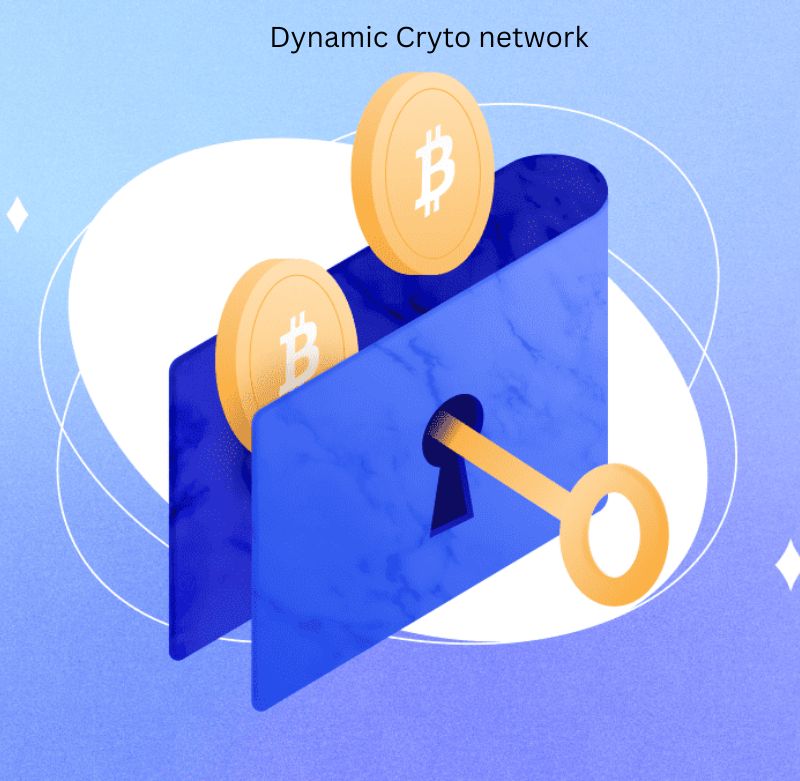How to setup a crypto wallet can feel like uncharted waters if you’re just diving in. Let’s cut through the complex jargon and make it plain sailing! Choosing the best crypto wallet doesn’t have to be a maze of unknowns. Whether you sway towards a ‘hot’ wallet for its ease or opt for the ‘cold’ kind for its vault-like security, you get to call the shots. Don’t sweat over the techy bits; I’m here to guide you through each careful step. You’ll learn how to set up, secure with top-notch tricks, and maintain your digital cash trove like a pro. Ready to be the master of your crypto kingdom? Let’s get those digital coins tucked in safe and snug!
Choosing the Right Crypto Wallet for Your Needs
Evaluating Types of Crypto Wallets – Hot vs. Cold Wallet
Picking a crypto wallet? Think hot or cold. Hot wallets connect to the internet. Cold wallets do not. Hot wallets are handy for quick trades. But they face more online threats. Cold wallets are offline, like a safe. They are best for long-term storage. So ask yourself: “Do I trade a lot or save for the future?” Your answer will guide your choice.

Features of a Beginner-Friendly Crypto Wallet
Hot wallets include web, desktop, and mobile apps. They’re free and easy to set up. You install them on your device and follow simple instructions. You’ll manage your coins with a click! But remember, hot wallets hold some risk. Hackers look for chances to sneak in. Always use strong passwords and be careful with your info.
On the flip side, cold wallets are like personal vaults. They come as USB drives or special hardware. They cost more but offer peace of mind. You plug them in, follow the steps, and bam! Your currency is locked away. No online hacker can touch them. It’s like keeping your treasure under lock and key. For the extra careful, this is the way to go.
Now, how about a mix of both? Some folks like to use both hot and cold wallets. They keep a little online for easy use and the rest offline for safekeeping. It’s a solid plan for balance and security.
Assessing Wallet Compatibility with Different Cryptocurrencies
Got many types of coins? You need a wallet that can handle them all. Many wallets support Bitcoin and Ethereum, the big names. But what if you dig deeper? Imagine squeezing an elephant into a car, it won’t fit! The same goes for your wallet. Make sure your wallet matches the currencies you own.
Check the wallet’s list to see if your coins are welcome. Multi-currency wallets are your best friend here. They’re like a big pouch that holds different kinds of candy! But there’s a catch. Some wallets may take more fees for less common coins. Look for ‘multi-currency wallet setup’ for a simple guide.
What about rare or new cryptocurrencies? You may need a special wallet for these. Don’t worry, there’s always a way. Look for a wallet that keeps updating. It’s like a backpack that grows to fit new stuff!
Before you choose, try this. Think of your needs as a key. Your wallet should turn smoothly in that lock, opening up to your demands. It should fit your coins, your trading style, and your hunger for peace of mind. With so many wallets out there, you can surely find your match.
Setting Up Your Chosen Crypto Wallet Step-by-Step
Initial Wallet Setup and Security Basics
Picking your wallet is key to stepping into the crypto world. Think of it like choosing a sturdy safe for your digital gold. Let’s break down how to set up that safe—your crypto wallet. First, decide between a hardware, software, or mobile wallet. Hardware wallets, like Ledger or Trezor, are physical devices that store your crypto offline. Software wallets are apps you can download on your computer or mobile device.
Once you’ve chosen, it’s setup time. For hardware wallets, connect the device to a computer and follow instructions. Software or mobile wallet users, download the app. Either way, you’ll create a wallet by making a new address. Write down your new address but keep it secret, like a hidden treasure map, because this is where your crypto will live.
Security is next. Pick a strong password—mix it up like a puzzle with letters, numbers, and symbols. Then, turn on two-factor authentication (2FA) for an extra layer of defense. It’s an additional step that requires a code from a device only you have.
Your wallet might offer to encrypt your private key. Always say yes. Encryption is like a shield for your wallet’s key, guarding it from hackers’ arrows. If it doesn’t prompt you, look in the settings to turn it on manually.
Remember, anyone with your private keys can access your crypto. You must keep them safe. Never share them—keep them to yourself, like a secret no one else knows.
Understanding and Managing Private Keys and Public Addresses
Now, let’s talk about keys and addresses. Every wallet has a public address and a private key. Your public address is like your home’s street address—it’s what people need to send you crypto. Your private key is like your home’s key—it’s what you need to open the door and access your funds.
When you first create your wallet, it will generate your private key. This moment is crucial—write down your key right away. Lose it, and you lose access to your funds. After you record it, some wallets give you a recovery seed phrase instead. It’s like a magic spell that can bring your keys back if they’re lost. Store this seed phrase safely, write it on paper, and hide it as you would a family heirloom.
Never store your private key or seed phrase on any device connected to the internet. Instead, write them down or print them out. Keep them in a secret and secure spot that only you can reach. Think of it like burying your treasure but remember where you put it.
Make sure you also understand the backup procedures your wallet offers. A backup is your safety net if anything ever happens to your wallet. Follow your wallet’s guidance on how to backup your data.
Mind your public address too. When you get or send crypto, check your address carefully. It has to match exactly, or your crypto could vanish like a ship lost at sea.
And that’s it—your wallet is ready. You’ll feel more confident now with these steps. You have a safe place for your crypto and a guide on keeping it locked away from pirates of the digital seas. Secure, backed up, and ready for action. Stay sharp, and keep your treasure safe!
Securing Your Digital Assets with Advanced Measures
Implementing Two-Factor Authentication and Encryption
When you hear “two-factor authentication,” think of it as a guard for your wallet. It’s like having a lock and a security camera. To set it up, go to your wallet settings and look for “security” or “2FA.” You’ll need your phone or an app like Google Authenticator. Every time you log in, you’ll get a code. You’ll need that code plus your password. This keeps your wallet double-locked and safe.
Encryption is like turning your wallet info into a secret code. No one can read it unless they have the key. You’ll often set a strong password to do this. Make sure your password has a mix of letters, numbers, and symbols. Never share it with anyone.
Establishing a Recovery Process Using Seed Phrases and Backups
Losing access to your crypto wallet can be scary. But with a recovery seed phrase and backups, you can stay calm. The seed phrase is a list of words that can bring back your wallet if things go wrong. Write them down in order—no phones or screens. Keep it in a place that only you can get to. This is your wallet’s lifeline.
Backups are your plan B. With wallets, you can make backup files. They save all your wallet details, so if your wallet ever gets lost or broken, you’re set. Just remember to keep backups in more than one place. Think of a safe at home or a bank’s safety deposit box.
Always remember, each step keeps your digital coins safe from theft or accidents. And that’s a big win for any crypto owner.
Maintaining and Using Your Crypto Wallet Effectively
Integrating with Cryptocurrency Exchanges and Managing Transaction Fees
Managing your new crypto wallet is key to keeping your digital coins safe. First, set it up to work with exchanges. This lets you buy and sell crypto. To do this, pick your exchange and link your wallet to it. Look for a “Link Wallet” or “Add Wallet” option. This will need your wallet’s public address.

Features of a Beginner-Friendly Crypto Wallet
Each time you move your crypto, fees are a must. They may change often. To keep fees low, check them before sending. Some wallets let you set the fee, but this can slow down the transfer.
Transferring Funds Securely and Verifying Wallet Transactions
Moving money in and out of your wallet needs care. Always double-check the address you send to. One wrong letter means lost crypto. Use your wallet’s QR code to avoid mistakes. Just scan and send – easy and safe!
After you send, check your wallet’s history. It shows all your sent and received crypto. Your wallet is smart. It can check its transactions without needing any help. This stops any unwanted guests from sneaking in.
Sharing your wallet’s public address is okay, but never share your private key. Think of the private key like your house key – for your eyes only! Keep your software up to date. This closes any open doors that hackers might find.
Taking care of your wallet keeps your crypto safe and lets you sleep well at night!
In this post, we looked at picking the best crypto wallet for you. We dug into the hot versus cold wallet debate, checked which wallets work with different cryptocurrencies, and walked through how to set up your wallet right. Then we moved on to locking down your digital cash with two-factor auth and backups.
Here’s the bottom line: Your crypto wallet is key, so choose wisely, set it up right, and keep it safe. Stay smart about exchanges and fees, and always double-check your transactions. Keep these tips in mind and you’ll handle your crypto like a pro. Your wallet is not just where you stash your crypto; it’s your personal safeguard in the digital finance world. Use it well, and you’ll stay ahead of the game.
Follow Dynamic Crypto Network for expert advice on cryptocurrency.
